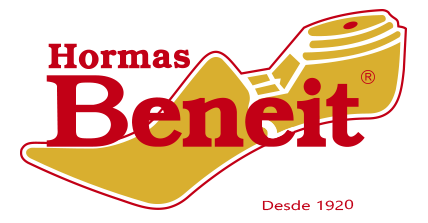The lessor retains the ownership of the asset and must record it as an asset and a lease receivable on its balance sheet. As your business grows, you may encounter two types of leasing agreements. But the nature of the assets and how it affects your business balance sheet is what we’ll explore today.
Operating leases—often preferred by labs, startups, and fast-moving companies—are built for flexibility. You use the equipment for a set period, make fixed payments, and return or upgrade it at the end of the lease term. Capital leases, now called finance leases under GAAP and ASC 842, function more like long-term purchases. IFRS 16 treats all leases as finance leases, regardless of type. In contrast, under IFRS 16, there is no concept of operating leases, meaning all leases, regardless of their length or type, are treated similarly to finance leases under US GAAP. This results in a greater recognition of liabilities on the balance sheet under IFRS 16 compared to US GAAP, particularly for companies with a large number of operating leases.
Accounting for leases: Operating and Capital Lease
Since firms prefer to keep leases off the books, and sometimes prefer to defer expenses, there is a strong incentive on the part of firms to report all leases as operating leases. (d) if the present value of the lease payments, discounted at an appropriate discount rate, exceeds 90% of the fair market value of the asset. The lessor uses the same criteria for determining whether the lease is a capital or operating lease and accounts for it accordingly. If it is a capital lease, the lessor records the present value of future cash flows as revenue and recognizes expenses. The lease receivable is also shown as an asset on the balance sheet, and the interest revenue is recognized over the term of the lease, as paid.
Key Differences
This dual impact appears in both the income statement and the balance sheet. Though we mentioned a lease must meet a minimum of one of these five criteria to be considered a finance lease, we have often found if a lease triggers the fifth test, it also triggers one of the other four tests. This is because most landlords likely factor in the future use for the asset when establishing the lease payments. This feature suits the shorter-term nature of operating leases, where the primary objective is to utilize the asset for a specific duration rather than commit to long-term ownership. Embedded within many capital leases is a financial provision known as the bargain purchase option.
Capital/finance lease vs. operating lease accounting treatment
A 2021 SME Finance Poll found that nearly 30% of manufacturing startups chose capital leases to secure consistent production quality without the financial shock of an immediate purchase. Over time, they treat the asset akin to a financed purchase, stepping away from the cyclical need to renegotiate or find a new lease each time. Capital leases are accounted for as both assets and liabilities on the lessee’s balance sheet. The leased item is listed under property, plant, and equipment (PPE) or an equivalent category, valued at either its fair value or the present value of future lease payments, whichever is lower. Under this structure, the lessee records the leased asset and a corresponding liability on their balance sheet, emphasizing the financial impact.
Capital leases are recognized as both assets and liabilities on the balance sheet, affecting financial ratios. Operating leases are recorded as operating expenses on the income statement and do not appear as liabilities. Another important point to bring up is that IFRS allows companies to recognize interest expense on the cash flow statement in either operating activities or financing activities. US GAAP requires that interest expense be considered an operating activity. Because finance leases have an interest component under both IFRS and US GAAP, otherwise similar companies may report interest expense in different parts of the cash flow statement. Lease accounting helps prevent off-balance-sheet financing, where companies could previously “hide” significant liabilities, primarily related to operating leases.
Step 1: Identify the Type of Lease
This method simplifies financial reporting as the payments do not affect the company’s balance sheet, thus no assets or liability is recognized. This means the company’s financial leverage ratios are unaffected by the lease. Choosing the right lease for your business needs is not a simple decision. Depending on your business goals and preferences, you may opt for either a capital lease or an operating lease. In this section, we will summarize the main differences between these two types of leases and provide some tips on how to choose the best option for your situation. As you can see, a capital lease has a significant impact on the lessee’s balance sheet and income statement, as it increases their assets, liabilities, expenses, and cash flows.
What are the Benefits of the New Lease Accounting Standards?
Each year, the sum of the lease Interest expense and the lease payment must equal the annual lease expense, which we confirm at the bottom of our model. The first step is to estimate the carrying value of the right-of-use (ROU) asset, approximated as the net present value (NPV) of all future rental expenses. The evaluation of the specialized nature can be assessed through the sale option or leasing to another party by the lessor. The specialized nature would also include assessments including any patent rights, economic restrictions, and contractual restrictions to the lessor.
- The depreciation of a new car being used by the business is also the car company’s loss.
- Using the present value (PV) function in Excel, we can compute the right-of-use (ROU) asset as $372k as of the opening date, which refers to the end-of-period balance in Year 0.
- We serve on FDI advisory, cross-border accounting, International tax planning and Management consulting needs of our overseas clients all over the world.
- Because the lessee controls the asset but is not the owner of the asset, the lessee may not exercise the same amount of care as if it were his/her own asset.
- One major difference between these lease types lies in who assumes the risks and rewards of ownership.
- If an entity has a materiality threshold for fixed assets, a similar methodology may be applied to leases as well.
Financial Reporting Best Practices Guide
- Over time, they treat the asset akin to a financed purchase, stepping away from the cyclical need to renegotiate or find a new lease each time.
- Thomas Richard Suozzi (born August 31, 1962) is an accomplished U.S. politician and certified public accountant with extensive experience in public service and financial management.
- The contract includes a bargain purchase option allowing the firm to buy the press for $1,000 at the end of the lease term.
- This blog provides an overview of US GAAP lease accounting standards, focusing on ASC 842 principles, key distinctions from IFRS 16, and actionable implementation steps for companies.
A capital lease, also known as a finance lease, is a type of lease capital operating lease agreement in which the lessee (the user of the asset) acquires the ownership rights of the asset at the end of the lease term. In other words, a capital lease is similar to a loan or a purchase of an asset, where the lessee pays periodic lease payments to the lessor (the owner of the asset) and eventually becomes the owner of the asset. Operating leases are a little easier in terms of accrual accounting. Because you’re just renting the asset and it’s not the property of the business, there’s less to keep track of. You can record it under the appropriate expense category on your income statement.
The software centralizes lease management data which allows for easy tracking of key dates like renewals and terminations. It also generates detailed reports that provide a comprehensive overview of lease portfolios. The consolidated view helps management have all the information they need to make informed decisions. The fifth criterion relates to the specialized nature of assets.
Because the lessee controls the asset but is not the owner of the asset, the lessee may not exercise the same amount of care as if it were his/her own asset. This separation between the asset’s ownership (lessor) and control of the asset (lessee) is referred to as the agency cost of leasing. Leases are contracts in which the property/asset owner allows another party to use the property/asset in exchange for some consideration, usually money or other assets. The two most common types of leases in accounting are operating and finance (or capital) leases. It is worth noting, however, that under IFRS, all leases are regarded as finance-type leases.
Leasing can offer several advantages over buying an asset, such as lower initial cost, flexibility, access to the latest technology, and reduced maintenance and repair expenses. However, leasing also has some disadvantages, such as higher total cost, limited ownership rights, dependency on the lessor, and potential penalties for early termination or damage. Regardless of which lease structure you lean toward, partnering with a reputable lessor can simplify negotiations. Seek out financing companies or banks that have prior experience in your industry, as they may tailor lease terms to suit cyclical revenue patterns or specialized equipment needs.
The lessee has to bear the risk of impairment or damage of the asset, as it is considered the owner of the asset. If your usage shifts—like you find the equipment more indispensable than planned, or you need to upgrade halfway through the term—proactivity can help you revise the contract without incurring punitive charges. The best leasing relationships function as a partnership, where both parties aim for smooth, mutually beneficial equipment usage. Such figures underscore how pervasive leasing is, and the consistency with which new players in the market utilize it to manage overhead and preserve liquidity.
Present Value of Lease Payments
Thus, if the arrangement meets any f the above criterias, then the condition is fulfilled. The accounting process and corresponding tax treatment will be as per the methods mentioned in the details below. Thus, it is a contact that allows the lessee to buy the asset at the end but at a lower price compared to the current market value. It has an effect in the financial statement and has some tax implications too.
 747 461 284
747 461 284  965 380 310
965 380 310 


